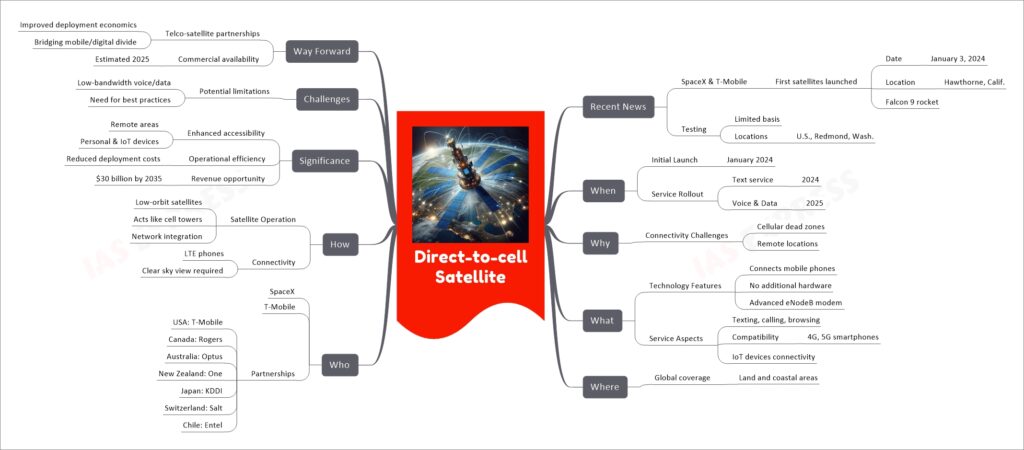Direct-to-cell Satellite

Direct-to-cell satellite technology represents a significant advancement in telecommunication, offering connectivity in remote or traditionally underserved areas. This technology enables mobile phones to connect directly to satellites, without the need for additional hardware. It facilitates not only personal communication through texting, calling, and browsing but also connects IoT devices, thereby broadening its utility. Initiated by SpaceX and T-Mobile, this technology involves low-orbit satellites acting as cell towers in space. The service is expected to roll out in phases, starting with text in 2024 and expanding to voice and data by 2025. The technology’s potential to improve operational efficiency and its projected revenue opportunity are substantial. However, it faces challenges such as bandwidth limitations and the need for adopting industry best practices. The way forward includes telco-satellite partnerships, aiming to bridge the mobile and digital divide, with commercial availability anticipated around 2025.
If you like this post, please share your feedback in the comments section below so that we will upload more posts like this.

